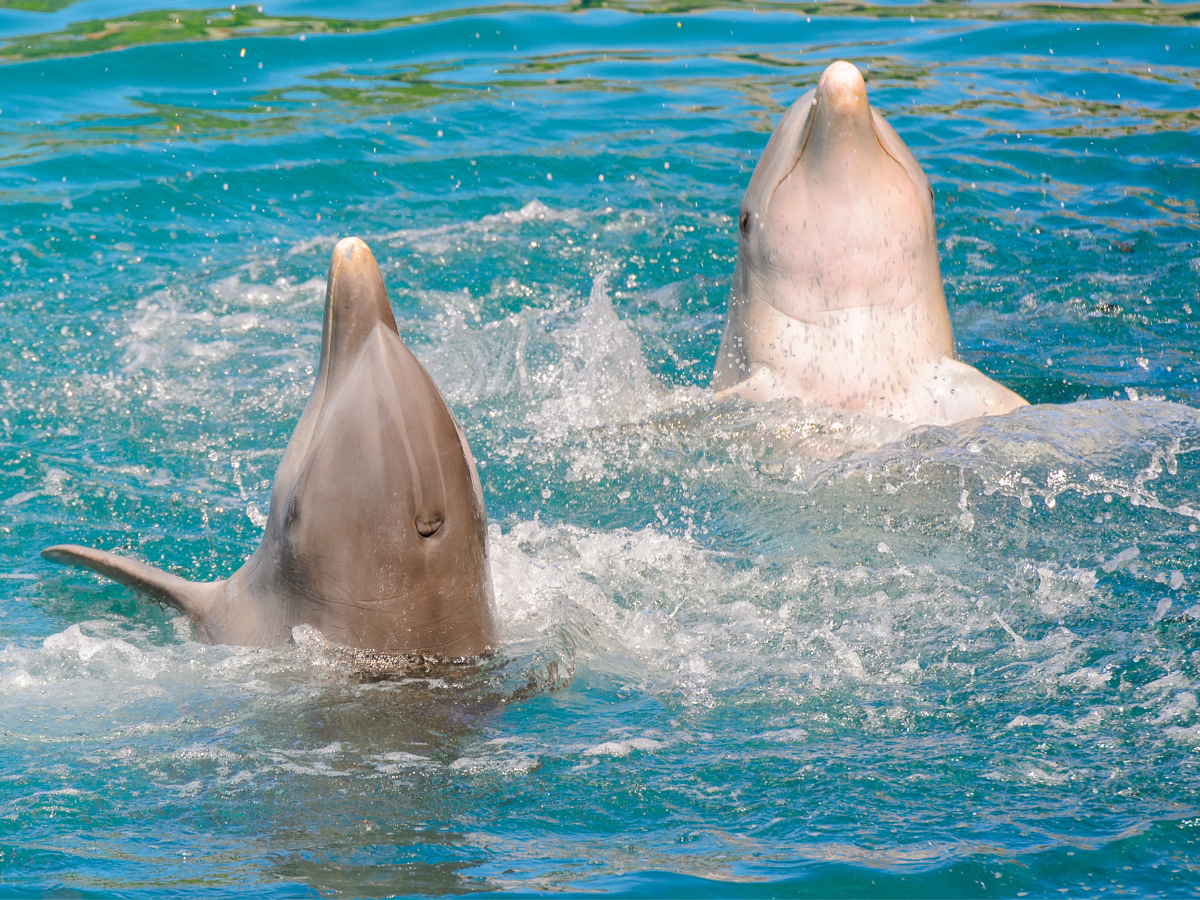Dolphin Altruism: Understanding Behavioral Adaptations
Dolphins are fascinating animals, and we continue to be fascinated by their behavior. They are curious, playful, and quick-witted. They have been observed playing and socializing with humans. They are incredibly compassionate and will help anyone they wish.
Scientists are unable to pinpoint the exact reason for this phenomenon. We know that dolphins are more closely related to humans than other marine species. In the wild, dolphins are known to swim under injured animals and help them breathe by pushing them up to the surface. These dolphin behavioral habituations exhibit altruism.
Altruism: What Does It Mean?
According to wildlife experts, altruism can be defined as an act in which an animal gives up its safety and well-being to benefit another animal. This phenomenon has been documented in the animal kingdom for many years; some dolphin behaviors have shown it for years.
Scientists believe that dolphins are helpful to humans and other species, dating back centuries. Scientists know dolphins are intelligent, large-brained, social, and exceptionally intelligent. They have also discovered that dolphins can recognize themselves in front of a mirror, an indicator of self-awareness. The National Aquarium in Baltimore stated that this ability is linked with higher empathy and altruistic behavior.
There are many theories to explain dolphins’ altruistic behavior. These theories include:
Kin Selection
This idea was formulated by William Donald Hamilton and is a way to explain behavior based on inclusive fitness. It differs from Charles Darwin’s concept of personal fitness. William believes natural selection is responsible for increasing one’s representation of allele genes. He advocates the survival of its related genes. This theory suggests a link between one’s altruistic behavior and closeness to the person they are helping.
Genetics
The debate against kin selection is among the most controversial in evolutionary biology. Edward O. Wilson, an American biologist, proposed this theory in 2000. It explains how social behavior is genetically determined. His claim is still controversial after withdrawing his statement in 2010 because of insufficient evidence.
Multilevel Selection Model
Based on group-level selection, this theory explains how different individuals and groups work together to maximize fitness and reproductive success. To protect their young, dolphins travel in groups to build strength and defend the group against predators.
Each theory provides a reasonable explanation for different aspects of dolphin behavior. Each theory also has its limitations, particularly when explaining altruism in isolation and without ulterior motives. The question remains: Is kindness more dependent on genes, or kin? Do do dolphins have an understanding of altruism?
A Few Stories
Are dolphins mean? They aren’t! Dolphins are the most popular marine animal featured in many news stories. These stories from boattoursjohnspass.com show a unique dolphin behavior pattern in assisting humans when in danger or need. These incredible narratives show just how amazing these animals can be.
Swimmer Rescue
Adam Walker, a long-distance swimmer, took on a challenging 8-hour and 36-minute swim through the frigid waters of the Cook Strait during a swimming competition. As he crossed the Strait, the pod swam beside him for approximately an hour. He noticed a sizeable shark-like from beneath him while competing. The shark was unable to get closer to him thanks to the presence of a group of about ten dolphins.
Surfer Savings
On August 28,2007, a great white shark attacked 24-year old surfer Todd Endris. The attack was almost fatal for Todd, but 15 bottlenose dolphins saved him and ensured he could swim safely to shore.
Whale Rescue
After several failed rescue attempts by humans on the New Zealand coast, “Moko,” a bottlenose dolphin, led a stranded mother and calves of a pygmy Sperm Whale mother back to sea in 2008.
Diver Rescue
A group of 12 divers got lost in shark-infested waters when a pod of dolphins accidentally surrounded them. The rescue operation lasted 13 hours, and the dolphin pod circled them until another team arrived to rescue them. The dolphins also assisted the rescuers in locating the divers.
Is It Natural for Dolphins to Help Humans?
Dolphins are friendly to humans due to their large brains and intricate limbic systems. This is where they get their emotional responses toward people.
Dolphins are intelligent because of their sizeable limbic system. Dolphins can learn new tricks quickly and recall humans and all the good things they have received from them.
Dolphins are also animals that live in groups called pods. They play together, protect and argue with one another. Dolphins will often save their pod members from danger, especially if they are part of a group.
Dolphins are compassionate towards humans and consider humans part of their pod. They are known to save people by leading them to shore and protecting them from shark attacks.This is also why the dolphins at the zoo have the same characteristics as other dolphins.
Key Takeaway
These stories demonstrate that dolphins can assess danger and lend a helping “fin” without thinking for their own good. They can also help save lives, just like they do for their pod members. You can meet these friendly and cute animals, learn about dolphin behavior patterns and enjoy a relaxing time with friends by contacting businesses that offer dolphin cruises and sightseeing activities.

